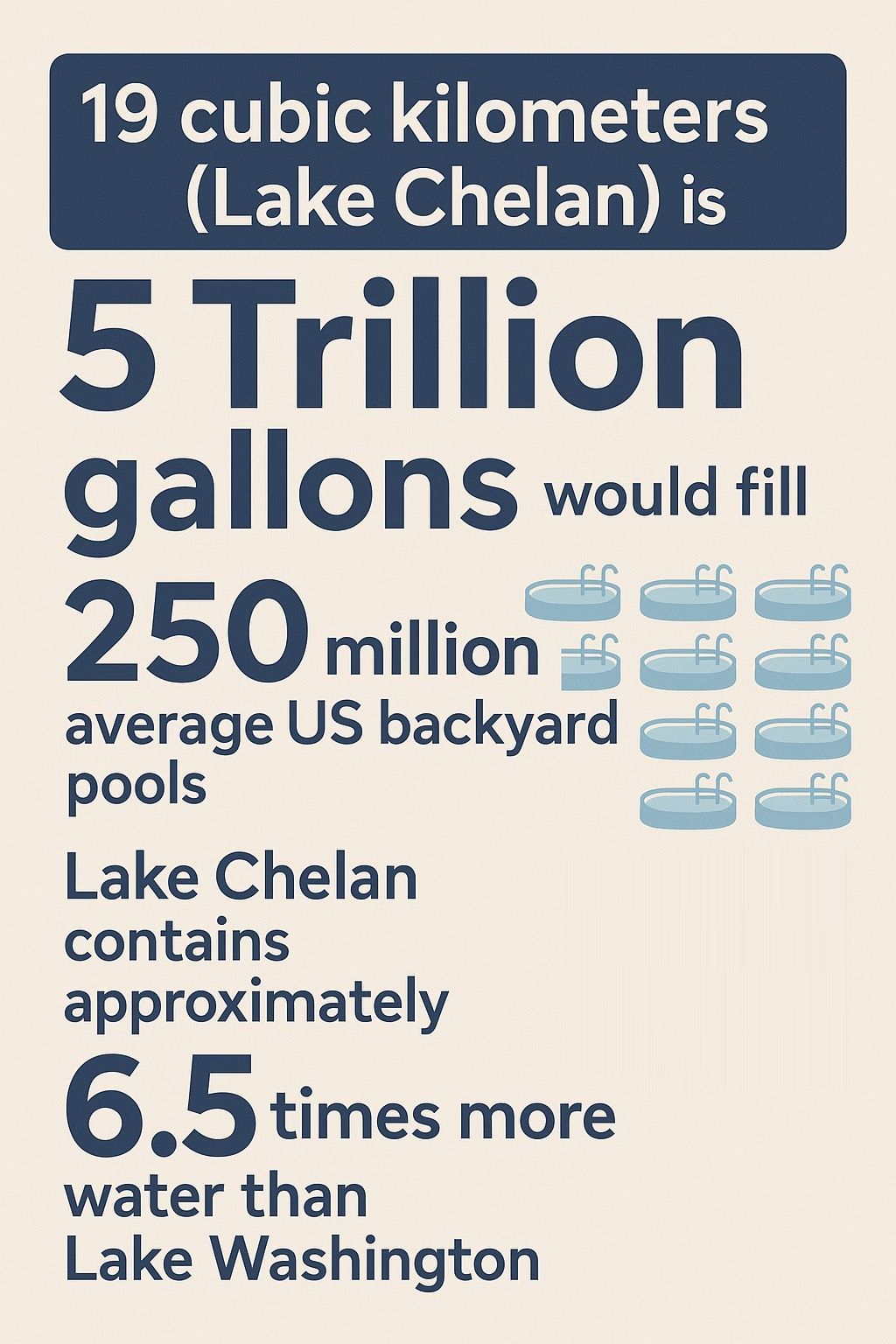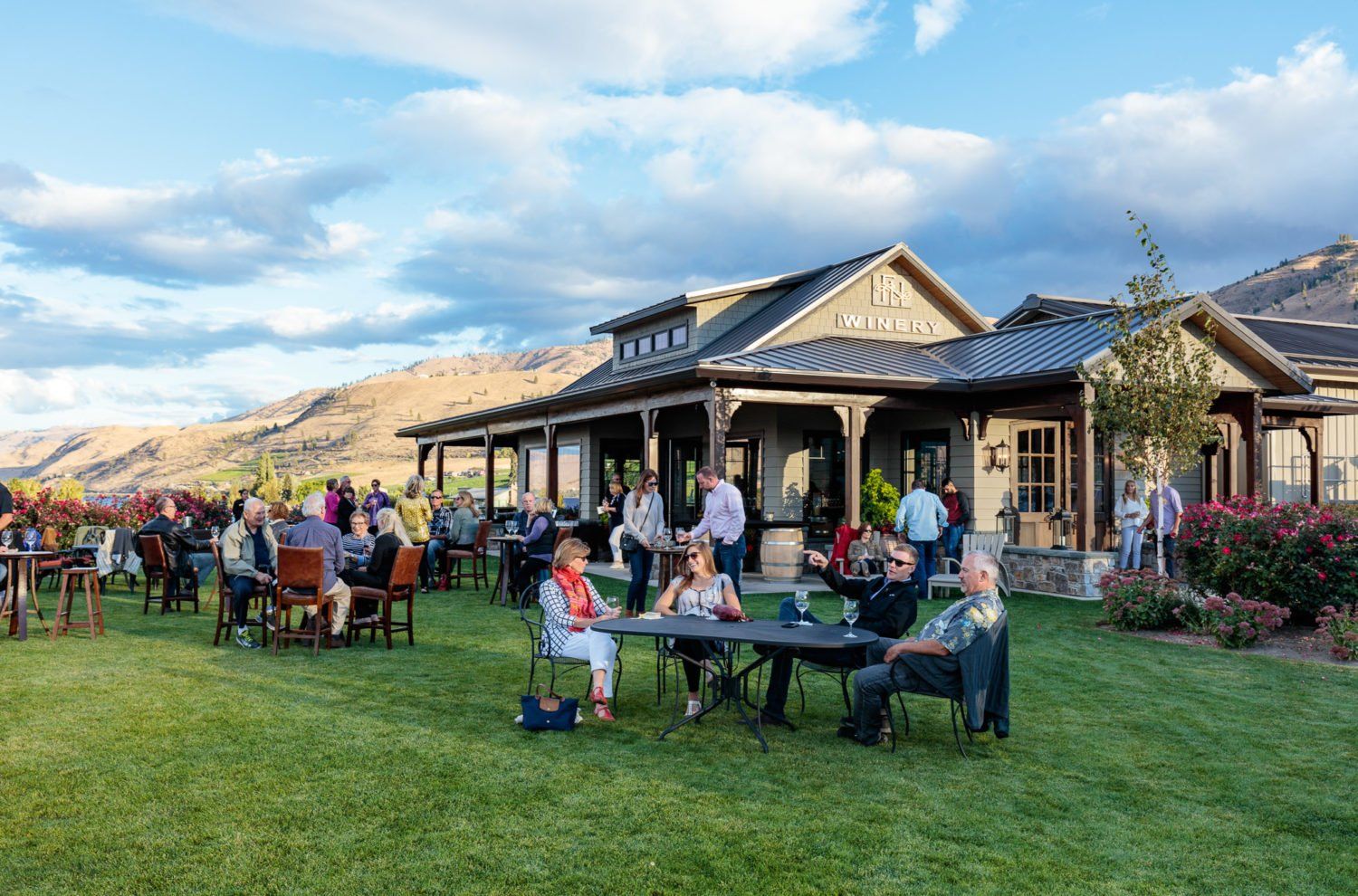The Magic of Lake Chelan - From Glacial Formation to Modern Day Paradise
Lake Chelan is one of Washington’s most beautiful natural wonders, a sparkling blue gem in the middle of the state. Whether you’re a long time resident, a property owner or a first time visitor, understanding the rich history of Lake Chelan adds depth to experiencing this amazing place. The lake’s story goes from ancient glacial forces to indigenous settlements, from homesteaders to today’s community. Join us on this journey through time as we explore the history of Lake Chelan.
A Geological Wonder: How Lake Chelan Was Made
The landscape of Lake Chelan has been taking shape for more than 10,000 years but recent geological research has completely changed our understanding of how this amazing lake was formed. For years scientists thought alpine glaciers carved Lake Chelan like other lakes in the Cascade region. But Lake Chelan’s extraordinary depth – 1,486 feet at its deepest point – required a more powerful explanation.
Geologists now believe Lake Chelan was formed by something much bigger: the continental Canada Ice Sheet. This wasn’t just any glacier but a massive ice mass that covered much of the Pacific Northwest. In a geological event unlike any other, two massive arms of this ice sheet converged at what is now Lake Chelan. One arm flowed through Rainy Pass and over Stehekin, the other (the “Okanogan Ice Sheet”) came from the east. Where these two giant ice flows met they engaged in what geologist Nick Zentner calls a “digging contest”, carving deep into the softer schist rock just past what we call the “Manson Bend”.
The result of this ancient ice sculpting is amazing. Lake Chelan is 50.5 miles long but only 1.3 miles wide, creating a fjord like shape. At its deepest point the lake bottom is 436 feet below sea level. To put its depth in perspective imagine three Space Needle buildings stacked on top of each other – that’s how deep Lake Chelan is! The gorge from the highest surrounding peaks to the bottom of the lake is actually deeper than the Grand Canyon.This geological wonder makes Lake Chelan the third deepest lake in the United States, only behind Crater Lake in Oregon and Lake Tahoe in California/Nevada. With a water volume of over 5 Trillion Gallons (19 cubic kilometers) it’s a significant freshwater resource for the region. For reference, 5 trillion gallons would fill 250 million average US backyard pools, and is 6.5X more water than Lake Washington! To see the topography of Lake Chelan, visit Lake Chelan–Washington's Deepest Lake (https://dancoecarto.com/lake-chelan).
The Chelan People: The First Stewards of the Lake
Human habitation around Lake Chelan began shortly after its formation, about 10,000 years ago, when a group that would become known as the Chelan people established villages along the lake shore. The Chelan were thought to be an offshoot of the larger Wenatchi Tribe and spoke the Wenatchi dialect of the Interior Salish language.
The name “Chelan” has interesting origins. When explorer Alexander Ross traveled along the Columbia River between 1811 and 1813 local Indigenous people told him the river was called “Tsill-ane,” meaning “deep water”. Ross noted in his diaries that the “Tsill-ane Indians” were members of the “Oakinacken nation”.
The Chelan people established their main winter village at a place called Yenmusi Tsa, which translates to “rainbow robe” – believed to be a poetic reference to the play of light on the lake’s surface. This village was located where the town of Chelan is now. In the warmer months they maintained summer camps north and slightly inland from the lake shore.
These early inhabitants were incredibly resourceful and mobile. They would cross the Cascade Mountains on foot to trade with tribes in north Puget Sound, travel northeast to Kettle Falls and southwest to Celilo Falls to trade and fish, and even journey to the plains of Montana to hunt buffalo. Their subsistence strategies were diverse: they hunted game from deer to marmots, gathered fruits, roots and vegetables, and fished in the lake and local rivers.
One of their most fascinating cultural practices was their method of environmental management. The Chelan people would burn forested areas to encourage the growth of plants that would attract grazing animals, showing a sophisticated understanding of ecological relationships. They also used cooperative hunting methods, driving deer and mountain goats into brush fences for more efficient harvesting, and employed tunnel-shaped fish traps to maximize catches.A Chelan legend explains why salmon can’t make it up the Chelan River to Lake Chelan: “Coyote saw the very beautiful daughter of a Chelan chief fishing in Lake Chelan so he decided to ask for her hand in marriage. When Coyote asked the chief for his daughter’s hand, the chief said no. This so enraged Coyote that he threw big rocks into the Chelan River. The rocks created rapids and falls that have ever since prevented the salmon from swimming upriver to the lake”.
Unfortunately, like many Indigenous peoples, the Chelan population was decimated by diseases introduced through European contact. While we don’t know the exact population before contact, records show there were about 250 Chelans living along the Columbia River and 1,185 in villages on the lake in 1850. By 1870 their numbers had dropped to fewer than 300.
Early European Exploration and Settlement
The first documented European contact with the Lake Chelan region was through Alexander Ross of the Pacific Fur Company between 1811 and 1813. While fur trappers and voyageurs likely visited the Lake Chelan area in subsequent years, formal exploration of the lake itself didn’t occur until later in the 19th century.
A significant military presence occurred in 1880 when Camp Chelan was established at the southern end of the lake, but it only lasted a few months. This brief military presence marked the beginning of non-Indigenous interest in the region.
The late 19th century saw the first permanent European-American settlers arrive in the Lake Chelan area. Among these early pioneers were Sanders and Domke who built a raft and paddled to the south end of the lake where it empties into the Chelan River. There they met Chelan and Entiat Indians from Chief Moses’s band who had either taken 640-acre allotments or refused to leave their ancestral lands. These early interactions were relatively peaceful as Sanders and Domke “got on well with the Indians and decided to stay”.Similarly, in the Stehekin Valley at the upper end of the lake, mining brought the first permanent white settlers in the late 19th century. Prospectors explored the area for gold, silver, lead and copper ore and established a small settlement in the lower Stehekin Valley with homesteading families, settlers, miners, packers and hotel owners.
Taming the Power: Dam Development and Hydroelectricity
As settlement grew, early developers recognized the potential to harness Lake Chelan’s water for various uses. The first attempts to control the lake’s water level began in 1892 with a dam at the lake’s outlet to provide water for south Chelan real estate and improve navigation to the city of Chelan. Unfortunately, this first dam washed out in the June floods of that year.
Undeterred, the Chelan Water Power Company built a larger and stronger dam in 1893. This one was designed to raise the lake level enough to allow steamships to land at Chelan but it too was destroyed in the June 1894 flood.
In 1899 M.M. Kingman bought the Chelan Water Power Company and built another dam in 1900. This time the focus was on power generation rather than navigation. This one was successful and in May 1903 the town of Chelan celebrated the “turning on of lights” marking the beginning of electricity in the area.
The ownership of the power infrastructure changed hands several times in the early 20th century. The Chelan Water Power Company was bought by the Chelan Electric Company in 1906 which was then acquired by the Spokane-based Washington Water Power Company in 1925. This company was granted a 50-year federal license to build what would become the modern Lake Chelan Dam.
Between 1926 and 1927 the Lake Chelan hydroelectric project as we know it today was designed, authorized and built. The 40-foot tall, 490-foot wide Lake Chelan Dam raised the lake level 21 feet to its present maximum-capacity elevation of 1,100 feet above sea level. The project diverts water through a 2.2-mile tunnel to a powerhouse, dropping 400 feet on its way and generating significant hydroelectric power.An unfortunate ecological consequence of the dam was that under the old hydropower licenses the Chelan River received almost no water and was dry for decades. This changed when the project’s license expired in 2004 and a new license was issued with requirements to restore water flow to the Chelan River, marking a shift towards greater environmental awareness in the operation of the dam.
Logging, Agriculture and Economic Development
As settlement grew in the late 19th and early 20th centuries the local economy diversified beyond power generation. Commercial logging began on the westside, low-elevation forests in the 1860s with logs rafted down Lake Chelan for use as apple crates. Much of what is now North Cascades National Park was not commercially logged but timber was recognized as a major resource of the Cascades from an early date.
The lack of transportation systems initially hindered logging efforts to move into the mountains. However, the construction of the Skagit River hydroelectric project in the 20th century allowed for more intensive logging in certain areas of the North Cascades.
Agriculture also played a big role in the region’s development. The soil around Lake Chelan was ideal for growing apples, grapes and other produce. The abundant clean fresh water supported numerous orchards and vineyards among the vacation homes that began to appear along the lakeshore. Today about 10,000 acres in the Lake Chelan area are dedicated to apple production making it an important part of Washington’s famous apple industry.
Lake Chelan Today: Tourism, Wine and Community
Over the decades Lake Chelan has transformed from a remote wilderness to one of Washington’s premier vacation destinations attracting over 2 million visitors a year. The crystal blue waters that so enchanted the early settlers continue to draw people seeking natural beauty and recreation.
Today most of the population around the lake is in the towns of Chelan and Manson on the southern end, though homes line the lake as far as the road goes. The northern two-thirds is mostly uninhabited due to steep slopes and protection through national forest and national recreation area designations. At the extreme northern end of the lake is the settlement of Stehekin which has between 100-200 residents depending on the season and is only accessible by boat, float plane or hiking trail.The lake has different experiences along its length. The southern end is like a desert, the western and northern ends have trees and glaciers on the peaks above. Water activities are mostly in the southern end where the lake is shallower and warmer for waterskiing, jet skiing and swimming.
In recent decades the Lake Chelan Valley has become a significant wine region with over 40 wineries in the area. Many have won awards and add a level of sophistication to the region and another reason to visit this corner of Washington.
The Legends of Lake Chelan
No history of Lake Chelan would be complete without some of the more colorful legends associated with the lake. Perhaps the most intriguing is the story of the “Dragon of Lake Chelan”. For over 200 years stories have circulated about a monster living in the lake.
One legend claims the creature was brought from Fort Augustus, Scotland in a treasure chest that was dropped into the lake during a storm in 1812. According to this tale what the sailors thought was a chest of gold was actually something far more sinister. When the captain dove in to retrieve the chest he was rescued by two female stowaways who revealed themselves as mermaids. The chest supposedly contained an egg that hatched into a creature that would later be spotted in the lake.
A local newspaper reported an incident in 1892 when an unidentified young man was bathing in the lake and was attacked by “very sharp jaws”. Whether fact or fiction these stories add to the mystique of Lake Chelan, a place where the depth and isolation of the lake and shoreline leave room for the imagination to wander.
Conclusion: The Enduring Charm of Lake Chelan
From the formation of the lake by continental ice sheets to the stewardship of the Indigenous peoples, from early European settlement to today’s communities, Lake Chelan’s history is the broader story of the Pacific Northwest but with its own unique character.
Today as visitors and residents enjoy the crystal clear waters, mountain vistas, wineries and recreational opportunities they are part of the ongoing history of this special place. The depth of the lake far below sea level is a metaphor for the depth of human experience in this corner of Washington state.Whether you’re looking to make Lake Chelan your home, invest in property here or just visit for a vacation, understanding the history of the lake adds to the experience and appreciation for this natural wonder that has everyone who sees it.
As you look out at those blue waters remember you’re looking at the result of epic geological forces, the ancestral home of an adaptable and resourceful people, the site of pioneering hydroelectric power and the foundation of a community that continues to evolve while honoring its past.
Sources
- National Park Service: Lake Chelan National Recreation Area https://www.nps.gov/noca/learn/historyculture/lake-chelan.htm)
- Chelan County PUD: History of Lake Chelan Dam https://www.chelanpud.org/parks-and-recreation/lake-chelan-recreation/history
- Washington State Department of Natural Resources: Lake Chelan Geology https://www.dnr.wa.gov/publications/ger_ic113_chelan.pdf
- Wenatchee Valley Museum & Cultural Center: History of Lake Chelan https://www.wenatcheevalleymuseum.org/
- Nick Zentner, Central Washington University Geology https://www.youtube.com/watch?v=HTRvsK5IBeE
- Washington State Apple Commission: Apple Facts https://bestapples.com/
- Lake Chelan Chamber of Commerce: History https://www.lakechelan.com/
- Legends of America: Lake Chelan Dragon https://www.legendsofamerica.com/wa-chelandragon/
- Chelan people - Wikipedia https://en.wikipedia.org/wiki/Chelan_people
- Reflections of Lake Chelan https://npshistory.com/publications/usfs/region/6/okanogan-wenatchee/lake-chelan-reflections.pdf
- Lake Chelan Dam https://www.chelanpud.org/hydropower/lake-chelan-dam



